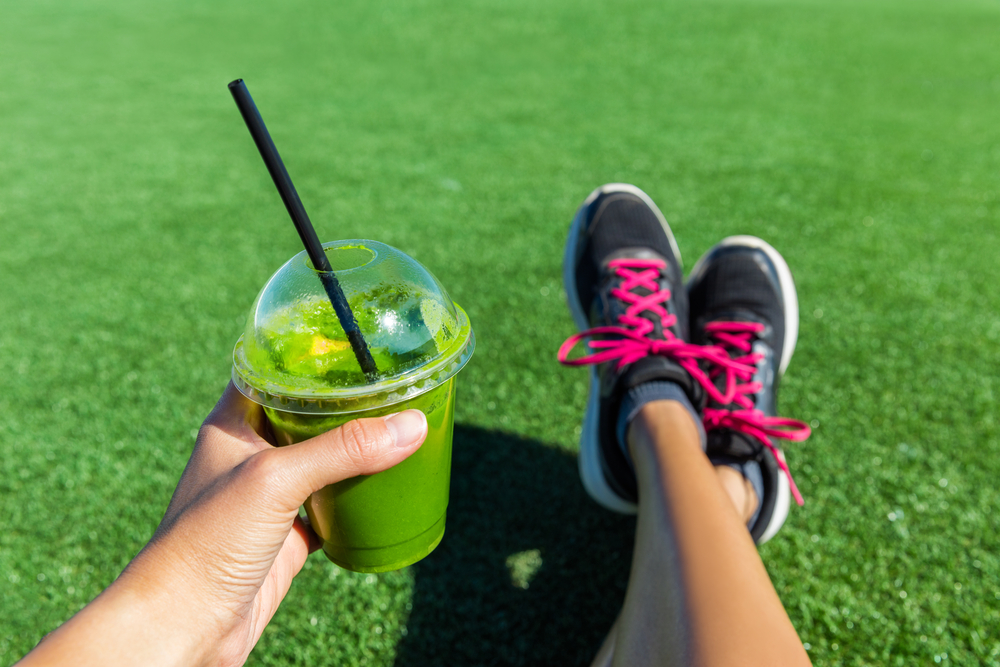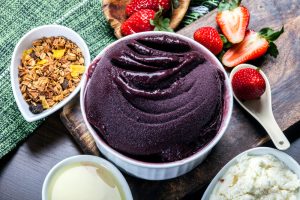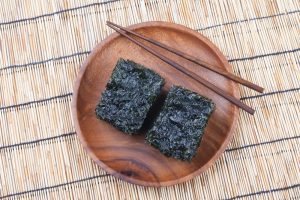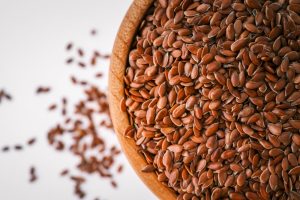What you eat after a run matters—especially if your goal is to lose weight without stalling recovery.
To refuel effectively and support fat loss, choose a light snack within 30–60 minutes that combines carbs and protein (around a 3:1 ratio), keeps calories in check, and avoids added sugars or excess fat.
Keep reading for exactly how to tailor your post-run nutrition based on workout intensity, timing, and weight loss goals.
Why Post-Run Nutrition Still Matters—Even When You're Trying to Lose Weight
Just because you're trying to cut calories doesn't mean you should skip refueling after a run.
In fact, what and when you eat after running can either support your weight loss efforts—or completely work against them.
The key is learning how to eat with intention: not more, just smarter.
Post-run nutrition plays a specific role in how your body bounces back after exercise.
When you run—especially for longer distances or at higher intensities—you deplete your glycogen stores (the body’s quick energy source), break down muscle tissue, and lose fluids and electrolytes through sweat.
If you ignore this recovery window, you not only slow your body’s ability to repair, but you also risk triggering the kind of intense hunger later that leads to overeating.
That kind of hunger rarely leads to smart food choices.
Refueling strategically doesn’t sabotage your weight loss. In fact, it can actually help you avoid eating more later by:
- Reducing cravings that lead to overeating at your next meal
- Stabilizing blood sugar so you don’t experience energy crashes
- Supporting lean muscle retention, which helps maintain a higher resting metabolism
If you're tempted to skip food to “save calories,” here’s what usually happens: your body enters a heightened hunger state later in the day, your decision-making around food drops, and you reach for something fast and calorie-dense.
It’s not a willpower issue—it’s biology.
Instead, the smarter approach is to eat a light, well-composed snack within 30 to 60 minutes of finishing your run.
This doesn’t mean doubling your daily intake. It means shifting calories to when they’re most useful and making sure your food choices support both recovery and fat loss.
Here’s the bottom line: effective post-run nutrition is not about eating more, it's about eating better.
Prioritizing quality and timing helps you avoid reactive eating later and keeps your body in a recovery-ready state—all while staying on track toward your weight loss goals.
Mastering the 30–60 Minute Window Without Overeating
That first hour after your run is when your body is most receptive to refueling.
It’s a critical time to give your muscles the nutrients they need to recover—but for weight loss, the key is doing it without accidentally eating more than your body actually needs.
After a run, your glycogen stores are low and your muscles are primed to absorb carbs and protein efficiently.
Eating during this 30–60 minute window supports recovery and helps reduce post-run fatigue.
But it doesn't take much. You’re not trying to eat a full meal—especially if your run wasn’t particularly long or intense.
For longer or harder sessions, a small snack right after you finish is usually the right move.
Something with both carbs and protein—following that general 3:1 ratio—is enough to kickstart recovery without packing on unnecessary calories.
Around 150 calories is a good target. This might look like a banana with a small scoop of peanut butter, low-fat chocolate milk, or a small protein smoothie with fruit.
But if your run is close to a scheduled meal—like breakfast or dinner—you can adjust.
Instead of adding an extra snack, simply time your next meal within that recovery window and build it to include the right nutrients: whole grains or fruit for carbs, lean protein, and a little healthy fat.
That way, you’re not stacking snacks and meals on top of each other.
For lighter runs (under an hour, at an easy pace), your body isn’t under the same recovery stress.
In these cases, there’s no rush to eat immediately.
Waiting an hour or two and then having a balanced meal works just fine—as long as you’re not showing up to that meal overly hungry and tempted to overeat.
The takeaway? You don’t need a big post-run meal to support your goals.
What you need is a thoughtful, modest approach that times your calories when they’re most effective—without tipping your total intake beyond what supports fat loss.
Keep it light, keep it intentional, and always think ahead to how that snack or meal fits into your day as a whole.
Get the Right Carb–Protein Ratio to Recover Without Gaining
When it comes to eating after a run, especially with weight loss in mind, the balance of what you eat is just as important as how much.
The goal isn’t just to eat something—it’s to eat the right combination of nutrients to support recovery while keeping calories under control.
The widely recommended post-run ratio is 3:1 carbohydrates to protein.
This means for every 30 grams of carbs, you aim for about 10 grams of protein.
That ratio works because carbs are your body’s main source for replenishing glycogen (the stored energy used during your run), and protein provides the building blocks your muscles need to recover.
It’s a simple formula that ensures you’re refueling without going overboard.
What makes this ratio so effective is that it targets recovery without flooding your system with unnecessary calories or fat.
After a run, your digestion is especially efficient—your muscles are like sponges, ready to absorb what they need.
But adding high-fat or high-sugar foods into the mix slows that process and often leads to excess calorie intake, which can stall fat loss.
Practical examples of snacks that stick to this 3:1 balance include:
- Low-fat chocolate milk – naturally hits the 3:1 ratio while also providing fluids and electrolytes.
- Banana blended with one scoop of protein powder – gives fast-acting carbs with lean, quick-digesting protein.
- Greek yogurt with berries – the yogurt delivers protein while the fruit brings in natural carbs.
- Apple with a tablespoon of peanut butter and a few whole grain crackers – adds healthy fats, but watch portion size to keep calories in check.
If you’re preparing a full meal after a longer or harder run, you can still apply the same concept to the composition of your plate: lean protein (like chicken or tofu), complex carbs (such as brown rice or sweet potatoes), and a small amount of healthy fat.
Just remember that the further out from your run you eat, the less rigid the ratio needs to be.
That 3:1 window is most helpful right after you finish, especially if the workout was intense.
For lighter runs, you don’t necessarily need to worry about this ratio right away.
But if you’ve gone longer, faster, or more uphill, it’s smart to keep it in mind—especially if you want to avoid fatigue and prevent cravings later that could lead to overeating.
In short, the 3:1 ratio gives your body what it needs, when it needs it—without tipping you into calorie surplus.
It’s a small adjustment with a big payoff for runners who want to recover well and still make progress toward weight loss.
Real Post-Run Food Options That Support Fat Loss
Knowing the why behind post-run nutrition is only part of the equation—what you actually eat matters just as much.
The goal is to refuel in a way that supports muscle recovery, curbs hunger, and fits within your calorie needs for fat loss.
That means leaning into simple, nutrient-dense foods that deliver the right macronutrient balance without tipping your intake into surplus.
For moderate runs—those lasting less than an hour at a steady pace—a small, well-balanced snack is often enough.
These snacks should ideally stay under 150 calories while still offering some carbs and protein.
Think of options like a small banana paired with a spoonful of peanut butter, or a Greek yogurt parfait with a handful of berries.
These foods are quick to digest and provide the nutrients your body needs without unnecessary bulk.
Hummus with sliced raw veggies is another great light option, especially if you prefer something savory.
After longer or more intense runs, your body needs a bit more to recover—but that doesn’t mean reaching for high-calorie comfort food.
A balanced plate with lean protein, whole grains, and vegetables does the job efficiently.
A tuna sandwich on whole grain bread with leafy greens is a simple, satisfying option.
Grilled chicken with quinoa and roasted vegetables also hits all the right notes: protein for muscle repair, complex carbs to replenish energy, and fiber to help you stay full.
A veggie omelet paired with whole-grain toast works well too, especially for morning runs—it’s filling without being heavy.
Some days, you might not feel like eating solid food right away—particularly after a long or hot run.
That’s where functional beverages come in handy. Low-fat chocolate milk is a convenient all-in-one solution, hitting the 3:1 carb-to-protein ratio while also replacing some lost fluids and electrolytes.
A protein shake blended with berries or half a banana is another easy, customizable option that’s both hydrating and nutrient-packed.
Beyond the macronutrients, paying attention to fiber and healthy fats can make a big difference.
Fiber from foods like oats, lentils, and berries helps keep you fuller for longer and supports digestion, which is important when you're managing calorie intake.
Healthy fats—think avocado, nuts, and seeds—aid in absorbing fat-soluble vitamins and supporting hormone function, but portion control is key.
A few slices of avocado or a small handful of almonds can add nutritional value without pushing your calorie count too high.
Hydration & Electrolytes: Don’t Mistake Thirst for Hunger

It’s easy to confuse thirst with hunger after a run—especially when you're tired, sweaty, and craving something satisfying.
But before you reach for food, it’s worth asking if your body might just need fluids first.
Proper hydration not only supports digestion and recovery, but it can also help prevent unnecessary snacking that pushes you over your calorie goal.
After short or low-intensity runs, plain water is usually all you need to rehydrate.
Your sweat loss is likely minimal, and your electrolyte balance hasn’t shifted significantly.
A glass or two of water shortly after your run can help ease fatigue, curb early cravings, and prepare your body for that upcoming snack or meal.
However, for longer runs, hotter conditions, or sweat-heavy sessions, water alone may not be enough.
When you sweat, you lose electrolytes—particularly sodium and potassium—which are essential for muscle function and hydration balance.
If you don’t replace them, you might feel drained, dizzy, or unusually hungry—when, in fact, your body is asking for salt, not calories.
You don’t always need a sports drink to address this.
Whole foods can often do the job more cleanly and naturally.
A banana provides potassium, while a small handful of salted nuts delivers both sodium and healthy fat.
Fruit-infused water or a splash of lemon and a pinch of sea salt in your water bottle can also help boost palatability and electrolyte content without added sugars or calories.
Another helpful habit is to drink a full glass of water before eating anything post-run.
This simple step hydrates you quickly and can take the edge off your appetite, giving you time to decide whether you're truly hungry or just reacting to the dehydration signal.
Adjust Based on Run Type and Timing
Not every run requires the same post-workout routine—how far and how hard you run, and when you run, all affect what your body needs afterward.
Tailoring your post-run nutrition to match the effort and context helps you recover efficiently without eating more than necessary.
The goal is to meet your body’s needs without overcompensating, especially if you’re trying to lose weight.
For light runs under an hour, there’s no need to rush into a recovery snack the moment you finish.
If you’ve kept the pace easy and you’re not stacking workouts that day, your body hasn’t used up significant glycogen or broken down muscle at a high rate.
In this case, you can wait an hour or two and simply follow up with a balanced meal—something that includes a moderate amount of carbs, protein, and healthy fats.
Think of it more as re-aligning your regular eating schedule rather than adding food to it.
There's no need to prioritize protein immediately, though it should still be part of your next meal to help with daily recovery.
For longer or more intense runs, the demands on your body increase significantly.
Glycogen gets depleted faster, muscles take on more stress, and recovery becomes more urgent.
Here, a small snack within 30 to 60 minutes makes a difference.
Stick to that 3:1 carb-to-protein ratio and keep the portion controlled—something like low-fat chocolate milk or a protein smoothie with fruit fits well.
Then, a few hours later, follow with a full meal that continues the recovery process: lean protein, complex carbs, and vegetables.
Timing the meal correctly helps prevent fatigue and avoids the trap of overeating later out of extreme hunger.
Sometimes you finish a run and eating just isn’t appealing—heat, intensity, or stomach sensitivity can kill your appetite.
But waiting until you’re starving only sets you up for reactive eating.
In these cases, easy-to-digest options are your best friend.
Smoothies, Greek yogurt, or fruit with a little nut butter are gentle on the stomach but still give your body the nutrients it needs to begin recovering.
Even if you can only handle a few bites at first, it helps stabilize your appetite and energy so you can eat more comfortably a little later.
Adapting your nutrition plan to the type and timing of your run keeps you from falling into one-size-fits-all thinking.
Whether it’s a short jog or a tough hill workout, the key is to match your recovery fuel to the actual effort—enough to recover, not so much that it cancels out your progress.
Conclusion
Refueling after a run is just as important for fat loss as it is for recovery.
The key is to eat with intention—keeping portions light, timing smart, and food choices balanced.
With the right approach, you’ll support your body’s needs without undoing the progress you’ve made on the run.







